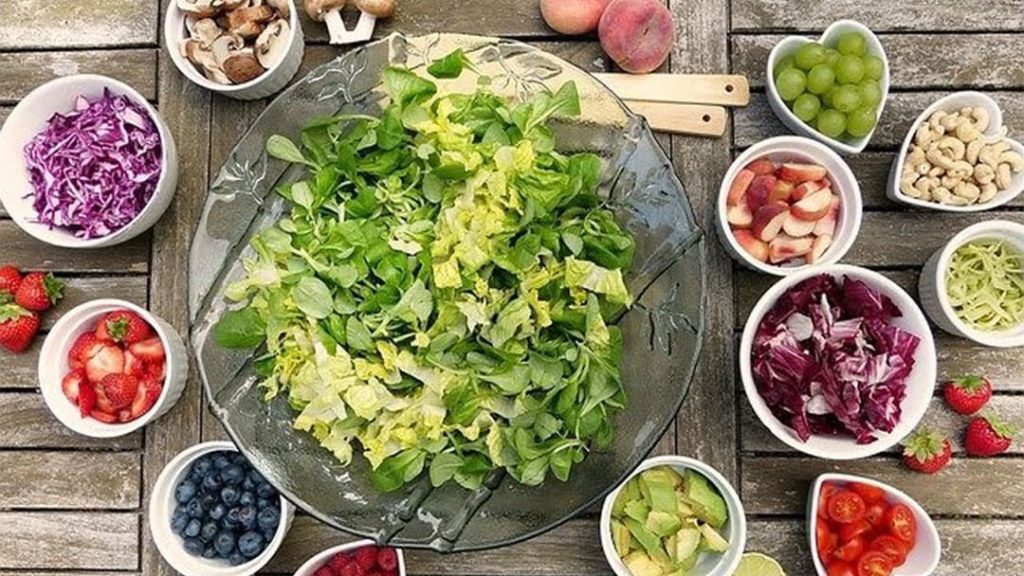Last Updated on March 17, 2022 by Ray
Have you ever experienced symptoms in your body that you can’t explain? Bloating, gas, constipation, diarrhea, or weight gain (or losses) can all mean you have food allergies, sensitivities, or intolerances. You might be a prime case for considering trying an elimination diet.
Sometimes the foods cause non-GI issues like low energy, joint pains, mood swings, headaches, migraines, hives, itchy eyes, acne, skin rashes, and runny noses. The frustrating part is that often you don’t know which of the foods you’re eating are causing the problems.
Food sensitivities are common in between 2% – 20% of the world’s population. They can wreak havoc in a person’s life, leaving them feeling unwell and helpless to change things. But the elimination diet can help you to sort through the confusion and figure out how the foods you eat are affecting your body.
What is the Elimination Diet?
The elimination diet is what it says on the tin – it’s a diet that works by eliminating potentially offensive foods. It has become popular because of its effectiveness in determining which foods your body may not be able to tolerate.
The process can take up to 6 weeks, with or without the aid of a medical or dietary professional. You remove from your diet foods known to cause issues until your symptoms disappear. You may find that you have no more digestive problems, you sleep better, bloating disappears, or you’re able to breathe freely as a result of removing certain foods. The foods are then slowly re-introduced as you monitor your body’s response. When the undesirable symptoms return, you’ll know which foods are responsible.
How to Know if You Have Food Sensitivities?
So how do you know if your issues are due to the foods you’re eating or a health problem? When we think of food allergies, we often think of the life-threatening kind, like a shellfish or peanut allergy. But the most common are less severe but have a range of symptoms – from the most troublesome to hardly noticeable.
Here are a few of the less noticeable side-effects of food intolerances:
- Fatigue
- Headaches
- Stomach cramps
- Dry skin
- GI issues like bloating, diarrhea, and constipation
- Itching
- Migraines
- Digestive problems
Every person’s body chemistry is different, so our responses to food also vary. But it is vital to your prolonged health to take note of how your body responds to what you eat.
Are you looking for life coaching that will take you to the next level? Check out Ray of Solace today!
What’s On the Elimination Diet?
Once you start eliminating foods from your diet, what’s left? To use the elimination diet, you have to figure out what foods to get rid of temporarily.
Here are five simple steps to doing the elimination diet:
1. Take note of your symptoms
How do you feel after you eat – tired, bloated, sick, or in pain? Do you have unexplained constipation, diarrhea, or stomach cramps? Are you irritable or have brain fog? Any of these may be explained by food sensitivity. Make a list of the symptoms you want explained – the prominent ones as well as the more subtle ones.
2. Remove the potential offenders
The basic diet stipulates that you should cut all the dairy, gluten, eggs, soy, junk food, nightshades (tomatoes and onion), citrus, corn, and alcohol from your diet for at least 23 days. The timing is set because the antibodies of your immune system take about that amount of time to completely renew. So any shorter time frame may not give you the information you need.
Alcohol is included in the list of eliminated items because of the sugar, yeast, and other harmful bacteria it contains. These war against your gut and can cause issues with your gut flora.
Related: Baby Allergies

3. Decide what you can eat
At this point, it might feel like you’re about to embark upon the most unpleasant 3 weeks of your life. This diet requires a little discipline on your part, but it is doable. And the results should make life going forward much more pleasant.
Take the time to build a few new habits over this period. Create a shopping list that reflects some of the new or differently-prepared foods you’ll be enjoying.
Your grocery list should consist of:
- 30% protein – clean, organic, grass-fed, lean beef, chick, shellfish, and wild fish.
- 70% vegetables, gluten-free grains (like quinoa), nuts, seeds, seaweeds, and legumes (beans and lentils).
Do this …
Eat plenty of fish (no mercury), fresh whole foods, fiber-rich foods, and unprocessed meals you make at home. Remember to include loads of healthy fats from foods like avocados, coconut oil, olive oil, ghee, and flax oil.
Don’t do this …
Skip the processed snacks and meals and anything high in sugar. Don’t over-do-it with the gluten-free pasta, bread, and cereals. Keep your refined carbs low.
4. Re-introduce the eliminated foods
Yahoo! The 23 days are up, and you’ve enjoyed life without those pesky symptoms. You feel great, and you may have even lost a few pounds. But now it’s time to add the foods back into your diet. On day 24, you get to choose one class of food to eat again – dairy, gluten, or eggs. But no more than one. Eat one food from that class and wait 48 hours to see how you feel. If two days pass without any negative symptoms, try to eat it again. If there are still no ill effects, consider adding it back into your regular diet again. Next, pick another food.
5. Continue to listen to your body
Continue the process of re-introducing foods back into your diet in a slow and methodical way. Listen carefully to your body and note any resurgence of bothersome or painful symptoms. Keep a detailed journal of this process – you may need to refer back to it later.
Even after you’ve figured out your issues, never stop listening to your body. Food sensitivities, intolerances, and allergies can develop throughout your life.
Related: Weird Pregnancy Cravings
What You Can (And Can’t) Eat On An Elimination Diet
When done properly, an elimination diet can help:
- Reduce IBS symptoms
- Improve symptoms of chronic conditions like eosinophilic esophagitis
- Reduce ADHD symptoms
- Improve skin conditions like eczema
- Reduce migraines
But what can you eat on an elimination diet, and which foods should you avoid? Well, the best elimination diets are typically the most restricting—the more foods you can remove in the elimination phase, the higher your chances are of finding which foods trigger symptoms.
Commonly eliminated foods include:
- Citrus fruits, like grapefruits and oranges
- Nightshade vegetables, like peppers and tomatoes
- Nuts and seeds
- Legumes, like beans and soy-based products
- Starches, like barley, wheat, and foods with gluten
- Processed meats, beef, pork, and chicken
- Eggs and shellfish
- All dairy products
- Fats, like butter and mayonnaise
- Caffeinated drinks, like coffee, tea, and soda
- Alcohol
- Condiments and spices
- Sugars, including white, brown, and honey
That’s a lot to eliminate! So, what can you eat?
- Most fruits besides citrus
- Most vegetables besides nightshades
- Grains, like buckwheat and rice
- Certain meats and fish, like turkey, lamb, and salmon
- Dairy substitutes, like rice and coconut milk
- Healthy fats, like olive, coconut, and flaxseed oil
- Water and non-caffeinated herbal teas
- Apple cider vinegar
- Black pepper, fresh herbs, and spices besides paprika and cayenne pepper
Staying motivated during the elimination phase can be challenging, but there’s still a lot you can eat! We like to experiment with new recipes, herbs, and spices to help us stay on track!
Final Thoughts
Eliminating certain foods from your diet won’t just make life a little easier; it might save your life. Many of the foods that you initially cut from your diet are the source of inflammation in the body. Inflammation can lead to chronic disease and other health issues. Everyone should try the elimination diet at least once, just to determine if they’re eating foods that are harming their body. If all you get from it is a little more energy and clear thinking, it would be worth the effort.
Are you ready to become a happier, healthier, more confident, and successful you? We can help. Contact Ray of Solace.
